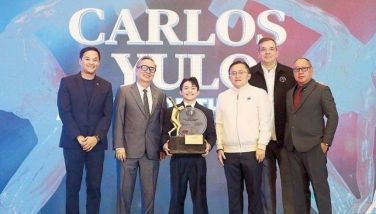Of Our Spanish Legacy
Spain has left three gifts to the Filipino people: Christianity, cuisine and language. Take a tour around the Philippines and the visible imprint that survived the centuries are its churches. Except for a few towns like Vigan (Ilocos) where you see intact Spanish edifices and a scattering of fortifications like Fort San Pedro, nothing is really left to see and admire. Indeed, Christianity is Spain’s greatest legacy.
The second heritage we have is Spanish cuisine. We have tried to imitate the culture of the table of the Spaniards, not adopted outright but modified to accommodate available ingredients and later adjusted to fit to the native taste. To feast on Spanish food in its original form was my goal in any travel to Europe; unfortunately, because of time and financial constraints, I missed it by a few inches (on the world map!).
On the Euro Rail between Paris (France) and Firenze (Italy), your favorite food columnist met three gentlemen, (two English and one from Slovenia, over bottles of wine and invariably the conversation turned to food and these personalities asked what we Filipinos eat. Luck was on my side since I still had in my camera, photos from the Sabores de España (Spanish Food Festival) held last July 16 at the Marco Polo Plaza Cebu (phone 253-111) (www.marcopoloplaza.com). It is always advisable to have several memory chips of smaller capacities rather than one chip with gigabytes of storage. If that goes kaput, say goodbye to your digital memories!
With great pride, I told them that we had several dishes for Tapas (appetizer) like the Tortilla de Patata, Eggplant Tortilla, Salt Cod Fritters, Zucchini Salad, Marinated Olives and Almendras Pecantes.
For the main dishes, we feasted on the Paella Valenciana, Callos ala Madrilena, Fabadas, Mechado del Campo, Lengua Estofada and my favorite that night, the Pollo en Chilindron. Dessert is simple lang, like the Churros with Chocolate Sauce, Crema Catalan and Apple Tart. And, excuse me, all these dishes were prepared not by a Spanish chef but a Cebuana, Gemma Luisa Pido, who is considered Cebu’s foremost authority of Spanish culinary tradition.
When asked about the national dish in the Philippines, I showed the photo of Chef Gino Gonzalez carrying the cochinillo asado (roast suckling pig) during the Pinoy Pinoy, a festival of traditional Filipino cuisine also held, excuse me, again at the Marco Polo Plaza Cebu and another photo of the Cebuano lechon during a luncheon in Carmen, Cebu.
For more culinary shock and awe, I showed them my 2010 Identification Card that your favorite food columnist is an Officer of an Association Mondiale de la Gastronomie (these three gentlemen could speak French, Italian and German!), the Chaine des Rotisseurs and the Ordre Mondial Des Gourmets Degustateurs.
Stopping for a cigarette break (cigarette pack, 5 Euro, 300 pesos or 350 if dollars were converted in E.U.) in the Swiss border (short train stop in Basel), I pondered on the impression I might have made on these gentlemen. Perhaps a bit too much airy but definitely I am proud to be a Filipino with a heritage cuisine and in Cebu City, where we have a hotel like Marco Polo Plaza with a five-star status.
- Latest
- Trending






















